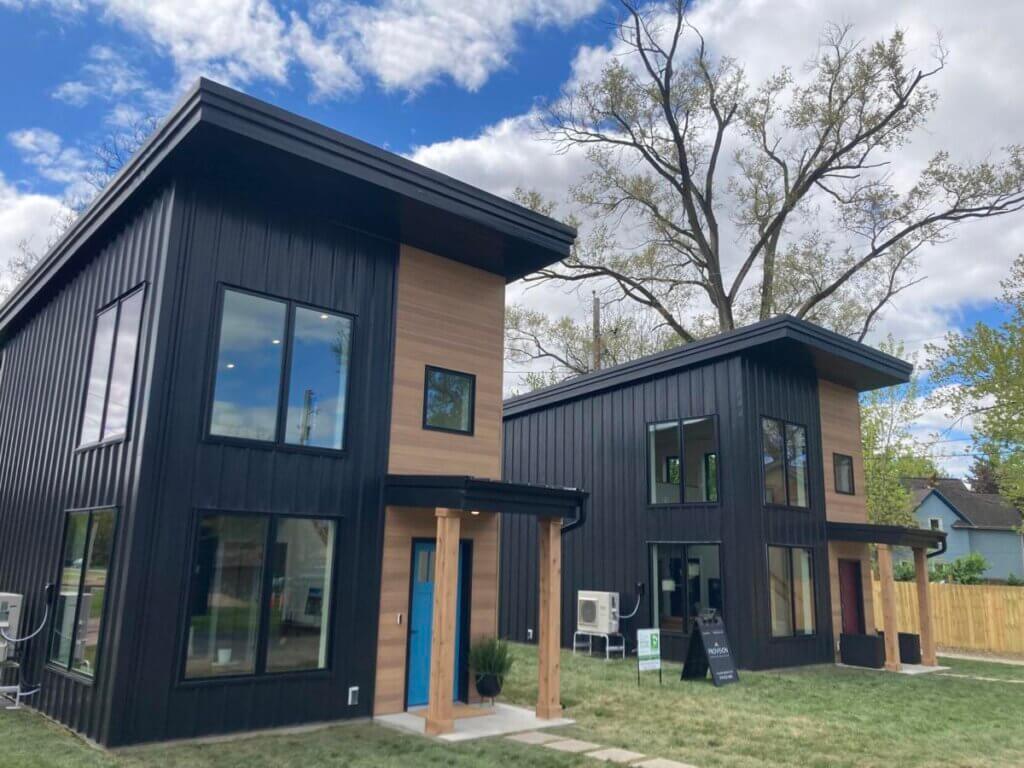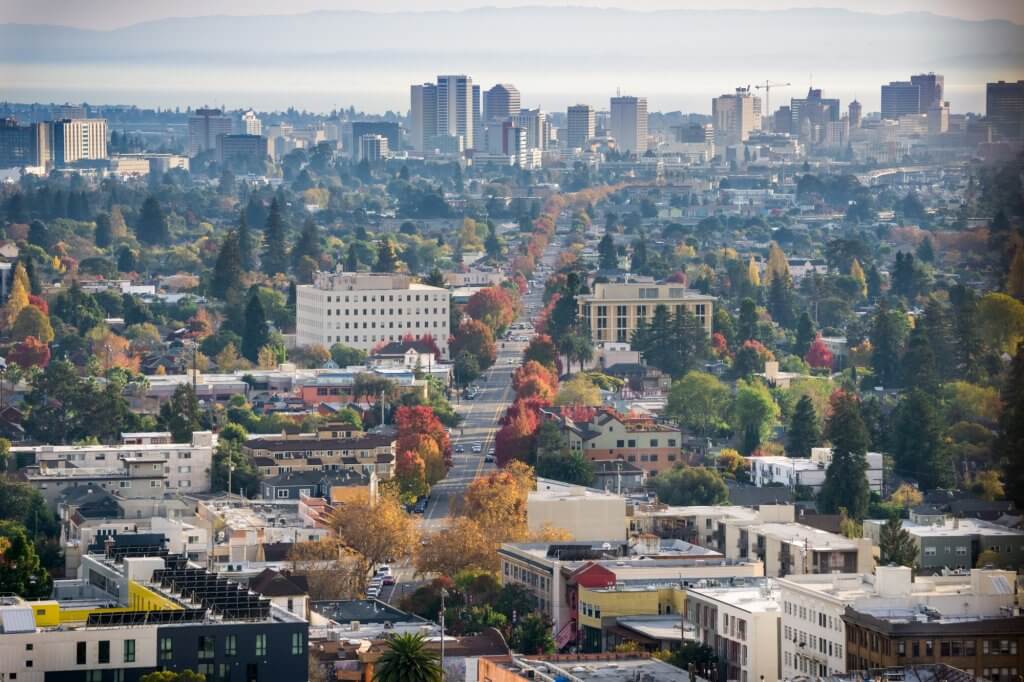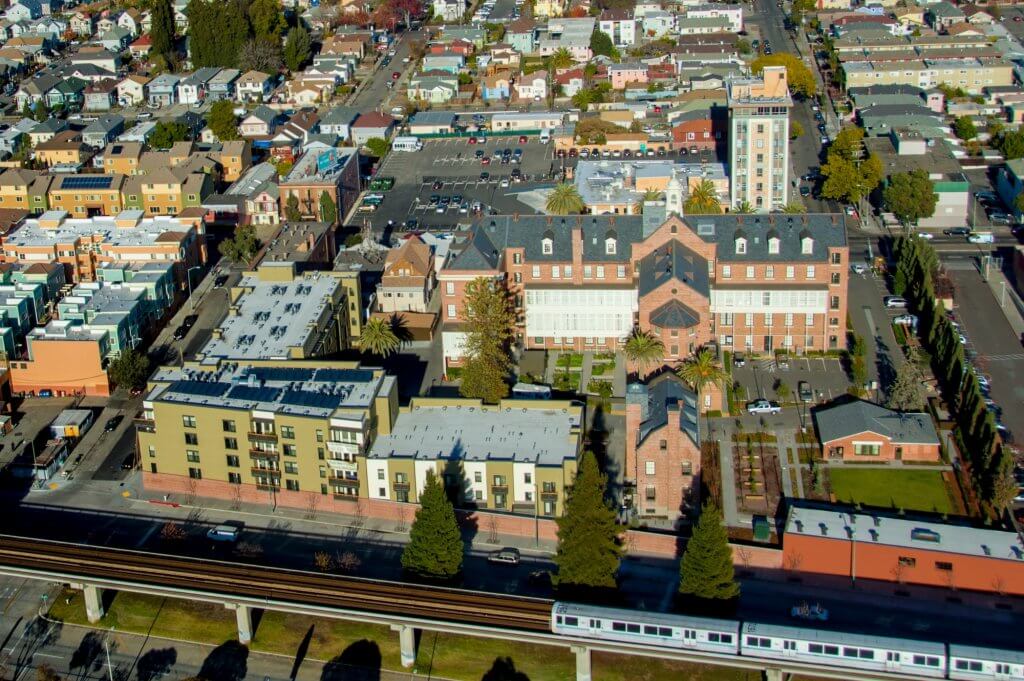Commercial Zoning Paper Series
Published On October 29, 2021
Is there an alternative future for the strip mall? Has COVID-19 created an opportunity to adapt underutilized commercial and retail spaces into housing? Could we expand the supply of housing by relaxing zoning constraints on commercially zoned land?
To help answer these and other similar questions, the Terner Center has published a series of reports that explore the potential for commercial land to be converted to residential use. With a focus on California but an eye to national implications, these studies seek to inform current debates on how to expand the supply of residential housing on commercially zoned land. Many localities have instituted ordinances to remove barriers from converting commercially-zoned parcels to residential uses or to support housing developers in commercial conversions by expanding density bonuses, eliminating parking requirements, or approving tax credits. During the 2020-2021 session, California’s state legislature considered a number of rezoning bills, including Senate Bill 6, an effort to authorize the conversion of underutilized commercial land to residential use at minimum density. While the bill did not pass, it signalled statewide interest in building housing in spaces historically reserved for commercial uses. The housing crisis, an ongoing transition from brick-and-mortar retail to e-commerce, and a growing utilization of telework have contributed to the mounting popularity of this solution.
The reports in this series highlight the conditions under which commercial to residential conversions are possible and profitable, and estimate the amount of new units that could be built if regulation limiting existing uses on commercial lands were relaxed. The studies also show that commercial rezoning is not a panacea for solving the state’s housing shortage. Still, they can be an important part of the policy playbook, given the prevalence of commercial corridors and underutilized spaces across the state. Below we provide brief summaries of our research on commercial conversions.
Inventory of California’s Commercially Zoned Land
Using 2019-2020 land use data and city planning codes, the Terner Center mapped commercial land in Los Angeles, San Francisco, San Diego, and Sacramento. The authors analyzed the amount of commercial land per capita and its distribution across categories (i.e., retail, office, and vacant), city sizes, and in census tracts of differing levels of socioeconomic opportunity.
Key Findings
- Roughly 60 percent of commercially zoned land identified in the study already permits residential development.
- Commercial land per capita varies greatly within metro regions, but is greatest in the Greater Los Angeles Area and Sacramento.
- Even when residential conversions on commercially zoned land are permitted, developers may be deterred due to varying entitlement processes across the state, jurisdictional subjectivity in planning code interpretation, and confusing overlay and parcel policies.
Recommendations
- Jurisdictions should provide clarity in the residential approval process and/or grant ministerial approval to projects that meet a specified list of requirements. They should also clearly define ‘commercial’ for zoning purposes.
Commercial to Residential Conversions in California
This paper estimates the impact commercial to residential conversions could have on California’s housing supply in the state’s four largest metro regions. Using data on conversions from 2014-2019, the authors estimate the probability that a parcel will be converted to residential use in the future, as well as the number of units the parcel would contribute if conversion were to take place.
Key Findings
- Less than 1 percent of commercial land was converted to residential use between 2014-2019; however, commercial conversions contributed significantly to the overall supply of housing in Los Angeles County (13.8 percent) and the Bay Area (8.5 percent) during this time.
- Commercial to residential conversions were most common in urban cores, older buildings or vacant lots (i.e., greenfield development), and, in Los Angeles and the Bay Area, segregated, high-poverty areas.
- Despite the large share of units coming from commercial conversions, the housing needs of each region eclipse the contribution of these conversions. For example, Los Angeles-Long Beach metro area can expect an additional 31,648 units from conversions over the next five years (2020-2025), but faces a RHNA allocation of 1,341,827 units.
Recommendations
- Local jurisdictions should consider creating zoning overlays or reforming commercial zoning code to allow for multi-family residential development on commercial land.
- The state and regional entities should provide cities with technical assistance to undergo such reforms, using Regional Early Action Program or state/regional funds.
Adaptive Reuse
Through a review of the literature and three California-based case studies, this paper explores the potential that adaptive reuse projects have to generate more housing throughout the state. The review highlights key trends and explores characteristics that make adaptive reuse projects marketable for residential use.
Key Findings
The report illustrates that adaptive reuse projects are more financially feasible if the existing structure meets the following criteria:
- It has shallow floor plates where the distance between the corridor and the edge of the building allows for more exterior exposure and natural light.
- It can accommodate enough housing units such that economies of scale can be achieved.
- It was built after 1980 as older buildings are more likely to contain hazardous material or have such outdated insulation and building systems that a demolition project would be more advantageous.
Recommendations
- Jurisdictions should clarify the legal process and adopt special zoning ordinances to streamline the approval of adaptive reuse projects.
- Jurisdictions should provide assistance to offset the larger financial contingencies needed to meet the costs of bringing developments up to health and safety codes.
The Full Reports in the Commercial Zoning Series
Residential Redevelopment of Commercially Zoned Land in California | Dr. Issi Romem & David Garcia | December 2020
Strip Malls to Homes: An Analysis of Commercial to Residential Conversions in California | Dr. Issi Romem, David Garcia, & Dr. Ida Johnsson | November 2021
Adaptive Reuse Challenges and Opportunities in California | David Garcia & Elliot Kwon | November 2021





